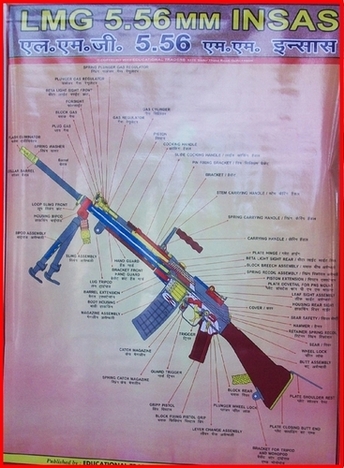weapon training Chart (Large)
Description
-
Firearm Safety Principles:
- Begin with a clear and concise explanation of firearm safety principles. Emphasize the importance of adhering to safety rules throughout the training process.
-
Weapon Familiarization:
- Introduce trainees to the specific weapon(s) they will be using. Provide detailed information about the firearm's components, operation, and basic maintenance.
-
Stance and Grip:
- Detail the correct stance and grip for optimal control and accuracy. Illustrate through diagrams or images the proper positioning of hands, arms, and body.
-
Aiming Techniques:
- Break down aiming techniques, including sight alignment, sight picture, and focus on the target. Guide trainees on how to achieve precision and accuracy during aiming exercises.
-
Trigger Operation:
- Explain the fundamentals of correct trigger operation, emphasizing a smooth and deliberate trigger pull. Provide guidance on trigger discipline, reset, and follow-through.
-
Breath Control:
- Incorporate techniques for controlling breathing during shooting sequences. Trainees should understand the impact of breath on stability and accuracy.
-
Shooting Drills:
- Develop a progressive series of shooting drills, starting with basic exercises and advancing to more complex scenarios. Include stationary and dynamic shooting drills to enhance versatility.
-
Reload Procedures:
- Cover proper techniques for reloading, whether under standard conditions or in high-stress situations. Ensure trainees can efficiently reload their weapons without compromising safety.
-
Malfunction Clearance:
- Provide instructions on identifying and clearing common weapon malfunctions. Trainees should become adept at troubleshooting and resolving issues swiftly.
-
Transition Drills (if applicable):
- For individuals using multiple weapons, incorporate transition drills to ensure seamless adaptation between different firearms.
-
Moving and Shooting:
- Introduce dynamic elements by incorporating movement into shooting exercises. Trainees should develop the ability to maintain accuracy while on the move.
Progression and Evaluation:
- Establish a clear progression path, outlining milestones and proficiency levels. Regularly assess trainees' performance through practical evaluations and knowledge assessments.
Conclusion:
A well-designed Weapon Training Chart serves as an invaluable tool in developing individuals' weapon proficiency. It promotes a systematic approach to learning, emphasizing safety, accuracy, and adaptability in various scenarios. Continuous refinement of the chart based on feedback and evolving training needs ensures its effectiveness in preparing individuals for responsible and effective weapon use.
Opps
Sorry, it looks like some products are not available in selected quantity.
.png)

